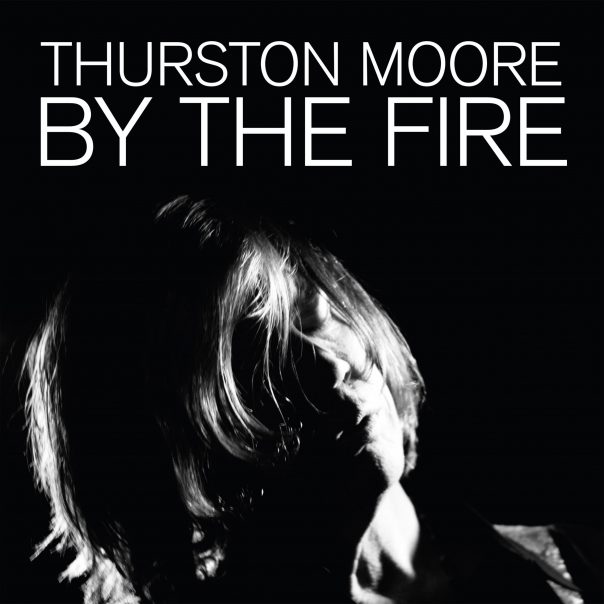ALBUM REVIEW: Thurston Moore reaches new latitudes of inspiration ‘By The Fire’

The place where pop and art intersect eludes most seekers. Some ambitious bands aim for the sweet spot and overshoot grossly. More commonly, a group disdains one dimension in favor of the other. Too arty for the mainstream yet too accessible for the purist, alternative rocker Thurston Moore is the rare musician who has spent his entire career uniting the two.
By the Fire
Thurston Moore
Daydream Library, Sept. 25
9/10
The guitarist has inhabited the space so entirely that his once abrasive sound has achieved a comfortable familiarity. His most recent project, Thurston Moore Group, debuted last year with the immense Spirit Counsel. Though technically a Thurston Moore solo album, By The Fire features most of the same musicians. And while elements of Moore’s previous solo efforts and collaborations are evident, By The Fire does distinguish itself.
The all-star lineup has a lot to do with it. Bassist Deb Googe (My Bloody Valentine) returns along with second guitarist James Sedwards, who jammed with the second incarnation of the groundbreaking This Heat. John Leidecker, aka Wobbly, brings his own brand of sound artistry to the mix. The cherry on top is drummer Steve Shelley, from the classic lineup of Moore’s Sonic Youth. This is one classy assemblage.
How this translates to an individuated sound is not immediately apparent. Though embellished with a thick sound and finely attuned intentionality to the group performances, on the surface the compositions sound like typical Moore. Specifically, the record taps into the driving, meditative guitar song-streams that have been his focus over the past decade. In this regard, the album primarily channels his increasingly thoughtful, unfolding approach to composition. More than ever, he effortlessly melds disagreeable elements of sound to simple and wayward melodies.
Guided by this sonic theorem, Thurston Moore and friends wisely avoid formula. On “Breath,” the raw materials go by in linear fashion. Beginning like the ’90s slowcore that Moore doubtlessly helped inspire, the song takes a series of abrupt turns. A rakish barrage of punk guitar slants in acid rain prior to a swaggering verse gradually bend toward severity. The clouds break on uplifting major tones, with dramatic turns steered by Googe’s insistent bass. More than a minute of shameless, alienating noise takes over as an exeunt.
The rest of the record reflects this series of variations. “Calligraphy” begins jauntily, with a hooky, Cubistic major theme before flirting with tension and Japanese classical music. On “Hashish,” metallic guitars wrap apprehensive wires around a cable of lingering surf drone until the rhythm section punches in forcefully. The comparatively heavy “Cantaloupe” teases tripped-out lyrics during a semi-melodic chorus.
This ability to convincingly change moods aids Moore’s raggy strumming guitar style. Though the songs achieve a similarity in style, the spirit of the performances is quite malleable. This is where the band truly enhances the end result. Where Moore’s solo albums could be a bit drawn out and flat, By The Fire flares up and dies down organically. A striking attentiveness from each musician makes each vibrating jam cohesive and spontaneous. Thurston Moore’s ensemble triumphs in sounding not like a supergroup, but like a band.
In part because of this, By The Fire introduces itself like the rock record that the brilliant Spirit Counsel transcended. Due to driving beats and solid song structures, the album recalls Moore’s solo albums from the 2010s. Melodies intermittently present themselves and the band mostly keeps its space explorations firmly tethered to discernible themes. Perhaps the most conspicuous contrast to the previous album is the presence of lyrics. Where Spirit Counsel delved deeply into instrumental fantasy, By The Fire finds Moore again concretizing his inspirations in verse.
This is not to say his conceptual streak is stifled here. Rather, it’s a backdrop of vivid material to Moore’s rock and roll impulses. “Venus” is a cinematic ballet for heavenly bodies and melted atmosphere. Things get terrestrially weird on the lengthy “Locomotives.” The band crescendo’s discordantly, summoning a sound like machines clashing. But seamlessly the continuous sustain morphs into something briefly harmonious, then resolute. Nine minutes in, the verse begins. The whole affair fantastically renders Krautrock abstractions, envisioned through a bifocal lens of post-punk and post-rock.
As a listening experience, By The Fire comes nowhere near the revved-up pop-trash obsessions of early Sonic Youth. The attitude Moore spat out in those days has largely quelled itself in favor of a calm professionalism. Yet the ineffable character of his former band hovers close by. One half-expects to hear Kim Gordon chime in on “Siren,” so precisely does the song recreate the bohemian pastoralism she and Moore forged in the 2000s.
But it’s Moore’s lilting moan that eventually rides in on the gently lapping waves of guitar. By The Fire is a mature album, and it sounds too lazily profound to be anything else. With this album, he has captured a most holistic experience.
Follow writer Alexander Baechle at Instagram.com/writheinsmoke.
